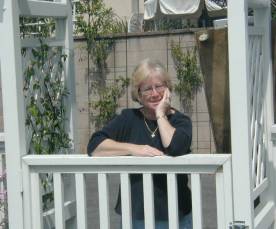The Digitization Policy Task Force of ALA's Office for Information Technology has developed a document on digitization policy. In this document nine basic principles are presented as principles or assumptions to move libraries forward in the digitization agenda.
The basic principles include:
Principle 1: Digital libraries ARE libraries. The policies of the Association apply fully to digital libraries including the core values such as commitment to access, confidentiality/privacy, the public good, and professionalism.
---Mary Ann’s first thoughts: Are digital collections the same as libraries? Is there the same commitment to access, confidentiality, public good and professionalism or are these resources so fluid as to provide a wider perspective.
Principle 2: Digital content, like other library materials, must be given the same consideration for collection development, ease of access, freedom of information, and preservation.
--Mary Ann’s first thoughts: Why? In this world of packaged resources (e.g. Proquest’s database collections, we do not “select” or “evaluate” individual titles, but rather, we select an overall database that serves most of our needs. In some cases, we don’t even know of the extent of titles added to a “package” or if it is “balanced” as we would hope a tangible, physical collection would be.
Principle 3: Digital activities and the resulting collections must be sustainable by libraries. Sustainability requires secure and ongoing funding, technology solutions that are appropriate to the longevity of the cultural record, and long-term management capabilities.
--Mary Ann’s first thoughts: While this is a desired goal, how do libraries that cannot sustain their physical collections with secure and ongoing funding lobby to get into this arena. This is not a reality but a goal. Years ago there was a maxim on an OCLC poster that read: “Without technical standards, systems cannot grow.” Now, anyone can publish their intellectual thoughts and records on the web. My question is “Is it even manageable?” or “What is it that we really want to manage?”
Principle 4: Digitization on a large scale requires collaboration. Collaboration enables the building of collections that support research, scholarship and information needs of diverse communities. Collaboration will require strong organizational support and promotion by cultural heritage professionals, their institutions, and their associations.
--Mary Ann’s first thoughts: True for large scale projects. But some of the really “long tail” items will provide intrinsic value in access, even if not through large scale collaboration. A small collection of memorabilia from an aboriginal tribe may be as “valuable” as any large scale projects…and it could be easily made available with minimal collaboration. Collaboration is often a luxury.
Principle 5: Digital activity requires ongoing communication for its success. The library and cultural heritage community must reach out to the public, to government, and to funding institutions with a clear and compelling message regarding the role of digital libraries and collections.
--Mary Ann’s first thoughts: There is merit is digital activity even without communication.
Principle 6: Digital collections increasingly address an international audience. These collections are part of a global information infrastructure that is not limited by geography.
--Mary Ann’s first thoughts: International audience, yes; however, there is still an issue with the digital divide in our national (as well as international) audience.
Principle 7: Digital collections are developed and sustained by an educated workforce. Members of the cultural heritage professions must engage in continuous learning and be able to explore new technology, to work with new partners, and to reach new audiences.
--Mary Ann’s first thoughts: Seems elitist…
Principle 8: Digital materials must be the object of appropriate preservation. Preservation activities require the development of standards and best practices as well as models for sustainable funding to guarantee long term commitment to these materials.
Principle 9: Digital collections and their materials must adhere to standards to maximize their usefulness. Standards must serve the broadest community of users, support sustainable access and use over time, and provide user functionality that promotes the core library values
(http://www.ala.org/ala/oif/statementspols/corevaluesstatement/corevalues.htm).
Labels: digitization policy

